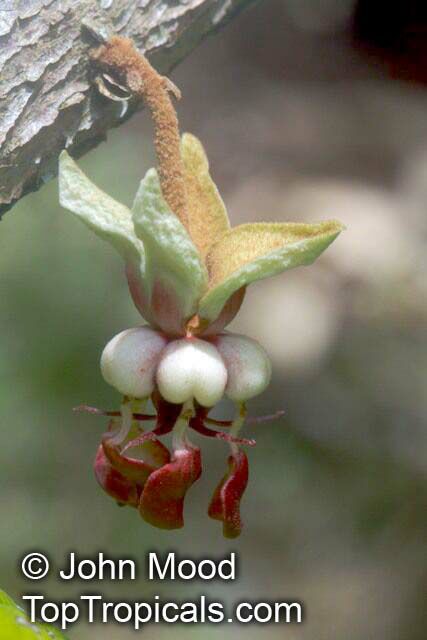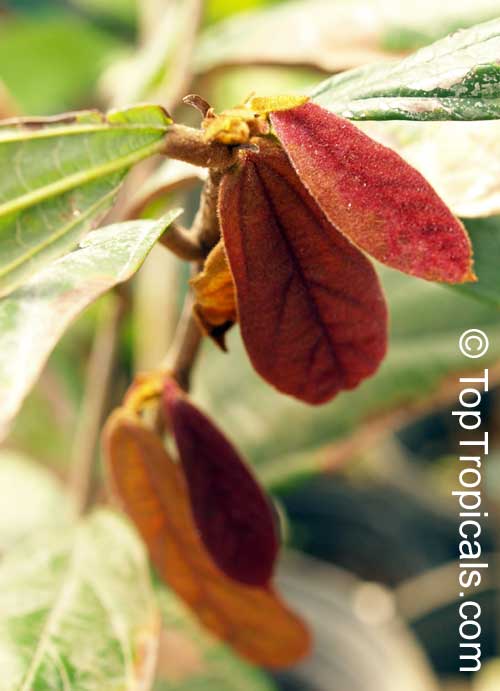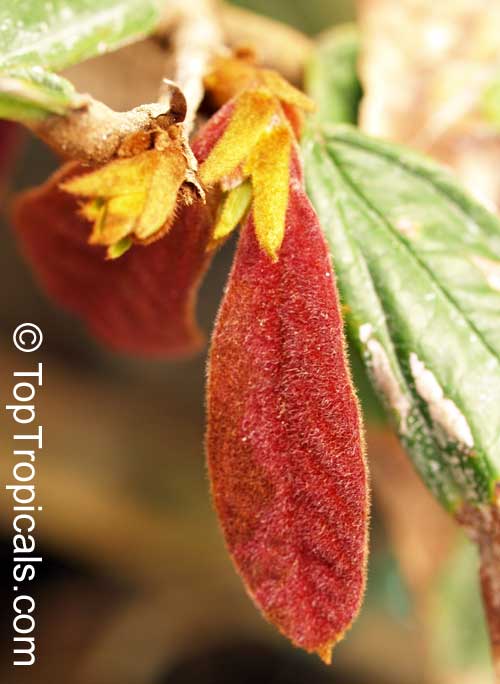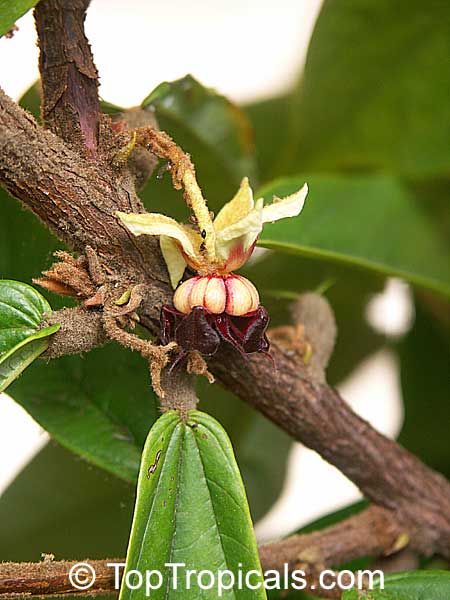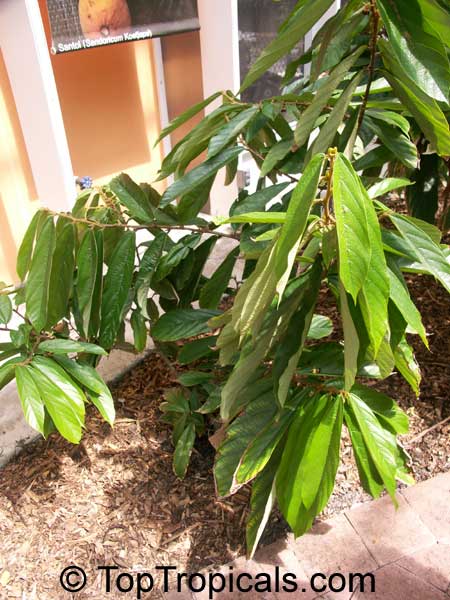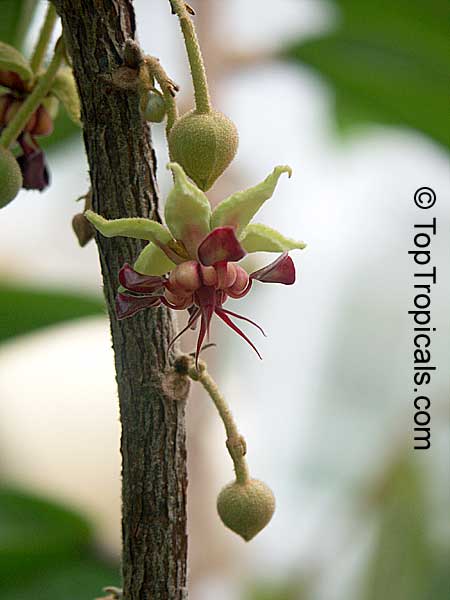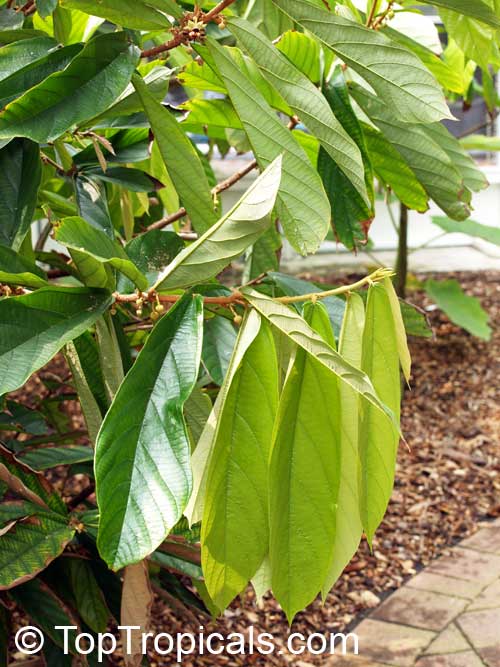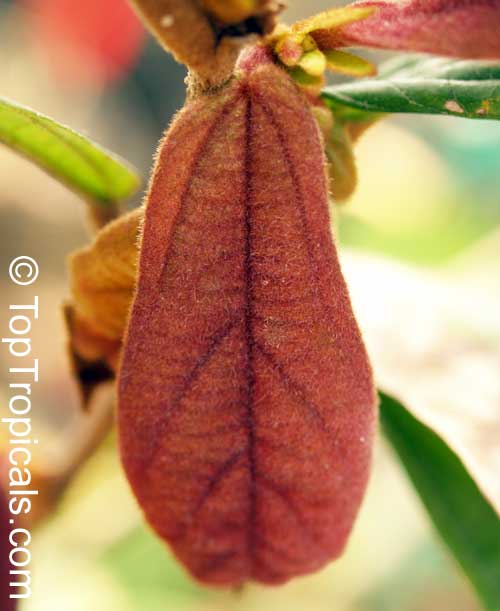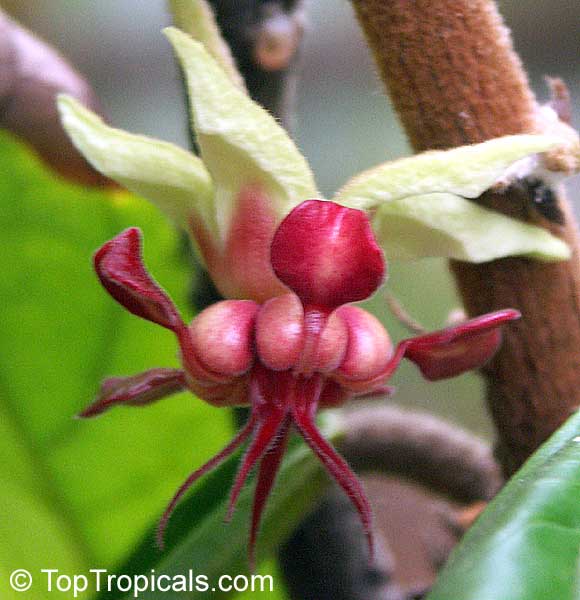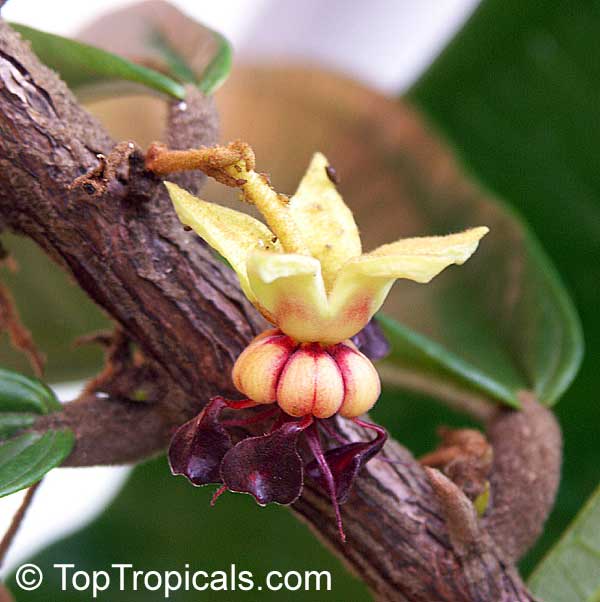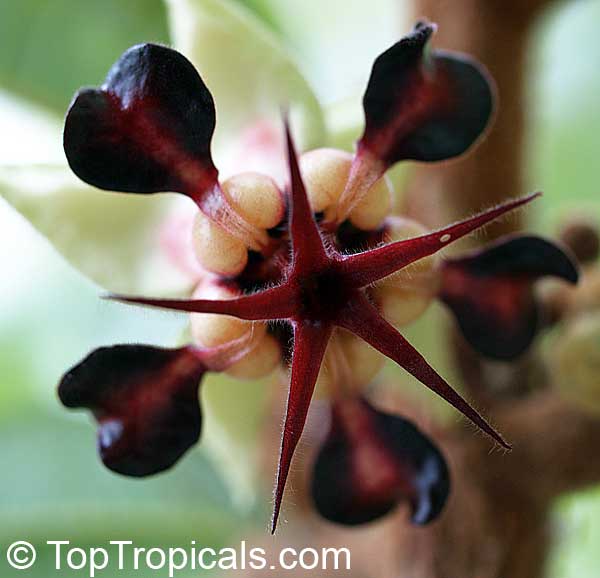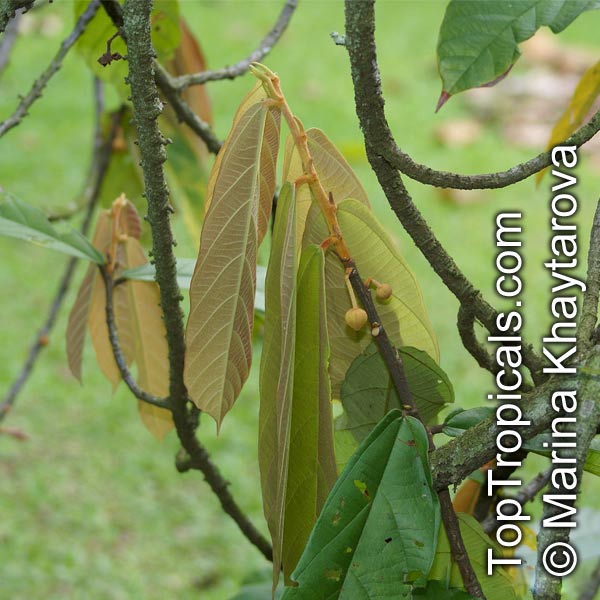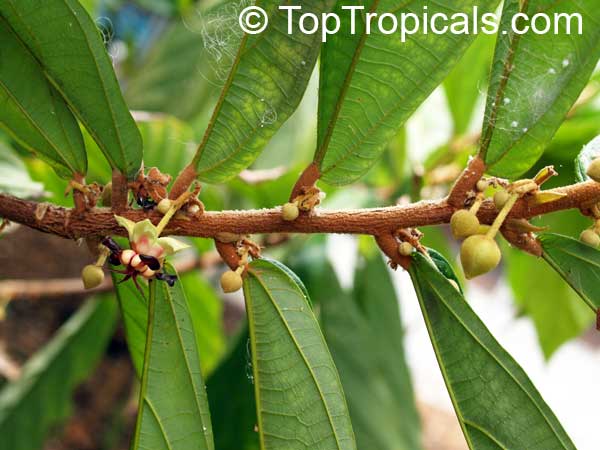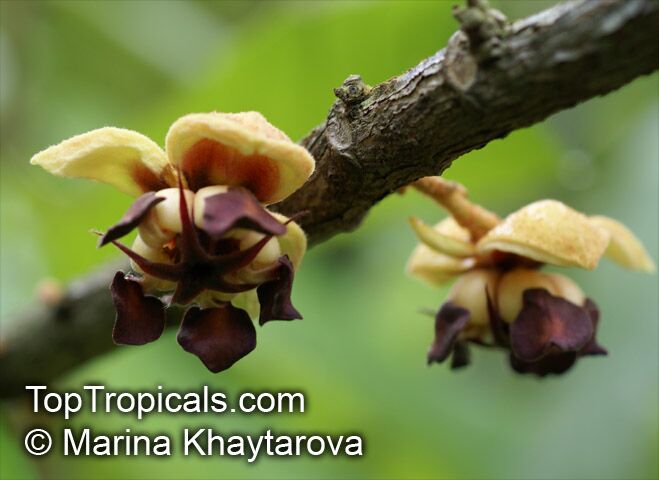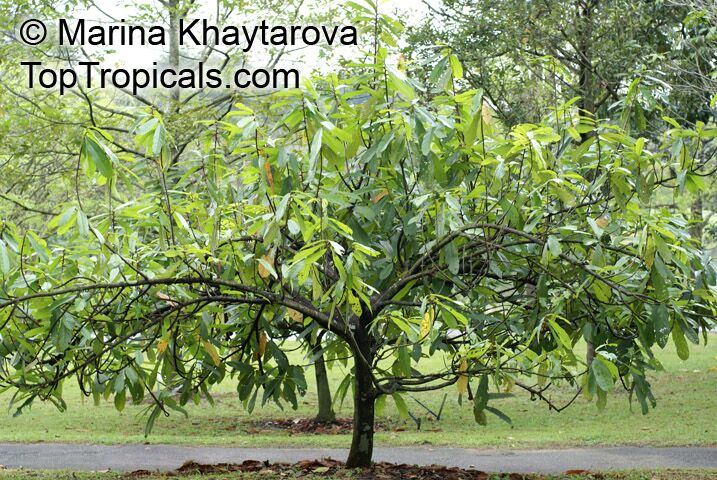Theobroma grandiflorum (Cupuasu)
Top Tropicals Plant Encyclopedia
Botanical name: Theobroma grandiflorum
Common names: Cupuasu, Copoasu, Cupuacu
Family: Malvaceae
Origin: South America







Theobroma grandiflorum can be propagated from seeds and cuttings, but are generally best grown from cuttings. It will grow in full sun and semi-shade and prefers a temperature above 55F. It can be grown in USDA Zones 11-12, making it a great ornamental plant for colder locations.
Theobroma grandiflorum (Cupuasu) is a small to medium tree that originates in the Amazon Rainforest. It can reach heights up to 50 Ft, with its seeds being dispersed by birds and monkeys that feast on the pulp of its sweet fruit. Indigenous tribes and local communities have been cultivating Cupuacu as a primary food source for centuries, traditionally trading its seeds along the Rio Negro and Upper Orinoco rivers. It is also an important ethnomedical plant for indigenous tribal medicine. The plant is used in Amazon region for abdominal-pains
Cupuacu fruit is about the size of a cantaloupe and is highly sought after for its creamy, exotic-tasting pulp. The pulp occupies approximately one-third of the fruit, and can be enjoyed fresh, in juice, frozen into ice cream, or made into jam or tarts. Cupuacu is plentiful in the rainy months between January and April, and is a highly prized delicacy in South American cities. It also boasts a variety of nutritive, stimulant, and tonic properties.
When it comes to fruit production, Theobroma grandiflorum typically produces multiple fruits each season. Each tree can yield up to 80-100 fruits with a sweet juicy pulp and a large center seed pod. On top of that, the fruit is rich in vitamin C, fiber, and minerals that can contribute to improved cardiovascular health.

